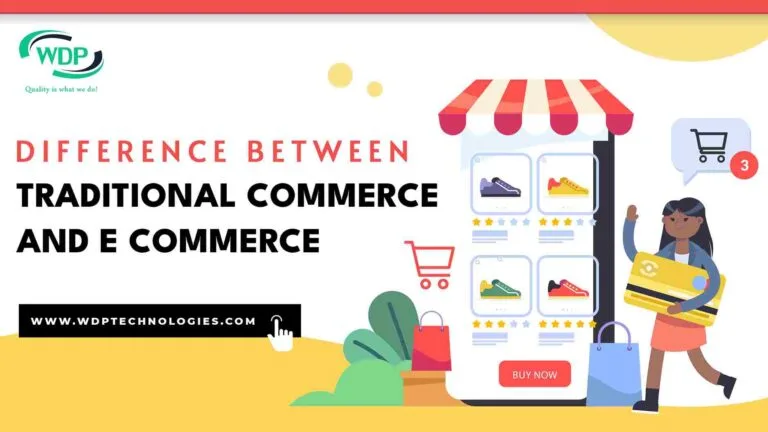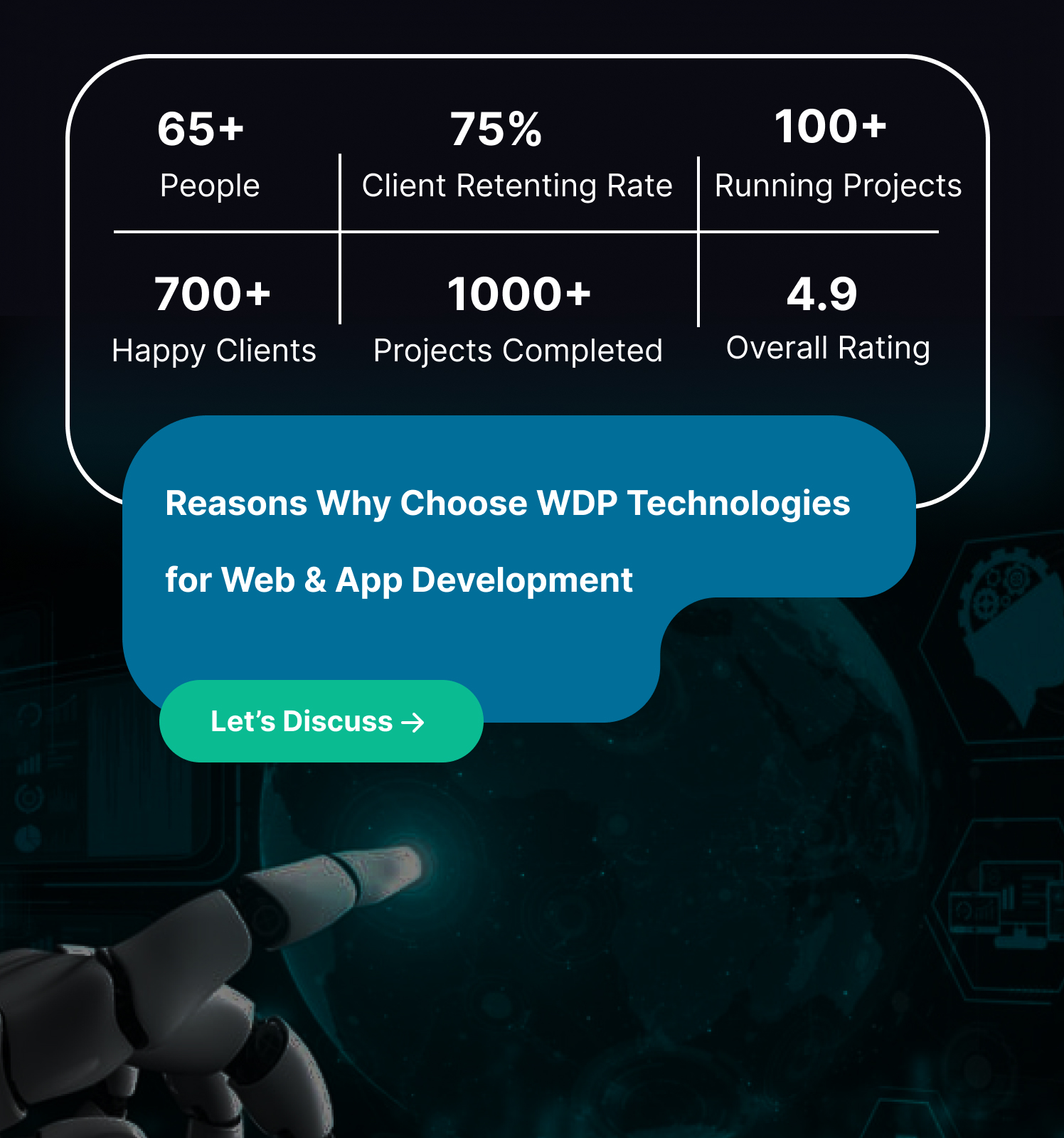Are you also thinking about difference between traditional commerce and e commerce, lets know all the perception between them. There was a time when people needed to perform all commercial activities like buying and selling products and services, transfer of money, and making payments the traditional way. This means one has to go to the market and search for the required product and services and choose from a big amount of options and buy them by making a payment of a specific amount. All these activities were done in a physical way.
But the technology has changed now you can do all these things just with your mobile phone and pc in just one click. There is a huge difference between traditional commerce and e commerce. Also, advantages of eCommerce over traditional commerce.
Traditional Commerce and E Commerce Market Stats
The e-commerce market is experiencing significant growth, while traditional commerce holds its ground. Here’s a quick breakdown:
a. E-Commerce
- Global Market Size: E-commerce sales are expected to surpass $5.5 trillion by 2027.
- Market Share: As of 2023, e-commerce makes up around 19.5% of global retail sales, and this is expected to reach 23% by 2027.
- Number of Online Shoppers: Over 2.64 billion people shopped online by the end of 2023, with projections reaching 2.77 billion by 2025.
b. Traditional Commerce
While specific market size data for traditional commerce is difficult to isolate, it’s safe to say it still represents the majority of retail sales globally. However, e-commerce is steadily capturing a larger share.
c. Regional Examples
- India: The Indian e-commerce sector is booming, expected to reach INR 4,416.68 billion in 2024 with an 11.45% annual growth rate [Forbes].
Basic Difference Between Traditional Commerce and E Commerce
Many people still do traditional markets as they think that it is not safe but in reality, it is more comfortable and easy to do. There are many advantages and disadvantages of both technologies. Let us understand the concept behind both commerce.
Traditional Commerce:
Traditional commerce is a process of selling and buying goods and services face-to-face by visiting a physical store. In this method, buyers have the advantage of going in personally to buy products and services. Some of the major benefits of traditional commerce are providing more personalized service and giving the customer an option to use all five senses before making a purchase. In this method, customers can personally interact and maintain a good relation with the seller.
Advantages Traditional Commerce:
1. Consumers can test the product before purchase.
2. It helps a person feel better about the environment they are in.
3. The owner cannot lose money since there are no hackers and scammers in the real world.
4. People without internet can visit stores for items.
5. Rip-off merchants can be caught easier than scammers
Disadvantages Traditional Commerce:
1. Consumers have to travel a certain distance for the product.
2. Not all store and businesses have the exact item for the customer.
3. It costs money to build the physical atmosphere
4. There is limited time of when the store is opened and shut.
E-commerce:
ecommerce is also known as electronic commerce. It is a process of trading of goods and services using internet services. Ecommerce is a way by which people can buy and sell things in retail. Some organisition us ecommer for selling thier products only, but for many, ecommerce is a distribution channel that’s part of a broader strategy that includes physical stores and other revenue streams. ecommerce also allows startups, small businesses, and large companies to sell their products at wider scale and reach customers across the world.
Benefits of e-commerce
1. Is growing rapidly
2. Offers global marketing reach
3. Provides the ease of ordering products online
4. Generally involves lower operating costs
5. Gives direct-to-consumer access
Limitations of e-commerce
1. Limited face-to-face interaction
2. Technical difficulties
3. Data security can be a challenge
4. Shipping and fulfillment at scale
Detailed Difference Between Traditional Commerce and E-Commerce
| S. No | Traditional Commerce | E-Commerce |
| 1 | It refers to the commercial transactions and exchange of information, making payment, buying and selling of products and services between two people using the internet. | In ecommerce every transaction, communication, buying and selling of products and services, sending and receiving payments are all done via electronic mode using the internet. |
| 2 | In traditional commerce, establishing and maintaining standard practices is difficult. | In E-commerce, establishing and maintaining standard practices is easy. |
| 3 | In traditional commerce, a direct interaction between buyer and seller is possible. | In e-commerce , communication between buyer and seller is done indirectly |
| 4 | Traditional commerce is carried out by face to face4, telephone lines, and mail systems. | Ecommerce is carried out by the internet |
| 5 | In traditional commerce, transactions are processed in a manual way. | In eCommerce, Transactions are processed automatically. |
| 6 | In traditional commerce, goods are received instantly | In e-commerce, the delivery of goods takes time. |
| 7 | In traditional commerce, accessibility to products is for a limited time | In e-commerce, products and services are accessible 24*7 |
| 8 | Traditional commerce is done where the digital network is unavailable | Using e-commerce a lot of time and money is saved |
| 9 | Traditional commerce is an older method of doing business | Ecommerce is the latest technology for doing business |
| 10 | Its resource focuses on the supply side. | Its resource focuses on the demand side. |
| 11 | In traditional commerce, Customers can touch and see the products and also can judge the quality of a product by checking it | In eCommerce, customers are not allowed to check the product physically before getting it. |
| 12 | Traditional business has the limitation of reaching people | There is no boundation in reaching people. E-commerce can be done worldwide. |
Key Differences Between Traditional Commerce and e Commerce
Traditional commerce refers to buying and selling products and services by physically visiting the store, while e-commerce refers to buying and selling goods and services through the internet. We have already discussed many differences between both of them but still, there are few left let us see what are the key difference between traditional commerce and e commerce.
1. When we talk about traditional commerce it includes activities like buying and selling products and services by going to the shop manual not only this it has many other activities like engaging with the other person. While in the case of e-commerce, everything is done via the internet so there is no personal connection between buyer and seller.
2. In traditional commerce, the transactions are done in a manual way whereas, in the case of e-commerce, there is no need of manual calculations everything is done automatically.
3. In traditional commerce, there are some time boundations like you can only buy or sell things during working hours. While in e-commerce you can even shop at odd hours too.
4. One of the disadvantages faced in e-commerce is there is no way you can check your product physically you will have to buy some project if you are not satisfied with the product you can resend it or exchange it but it will take time. whereas in the case of traditional commerce one can physically inspect the quality of goods.
5. In traditional commerce, there is a proper interaction between buyer and seller while in e-commerce there is no such possibility. Buyer and seller have indirect interaction it can be because of the distance in miles.
6. You can only spread your business to a limited are in traditional commerce where as in the case of e-commerce there are no geographical boundaries included.
Similarities between eCommerce and Traditional Commerce
eCommerce and traditional commerce have several similarities. Some of these similarities include:
- Transactional in nature: Both eCommerce and traditional commerce are transactional in nature, meaning that they involve the exchange of goods or services for money.
- Customer service: Both types of commerce require excellent customer service to build a loyal customer base. Good customer service includes quick response times, resolving customer complaints, and addressing customer needs.
- Marketing: Both eCommerce and traditional commerce require effective marketing strategies to attract and retain customers. Effective marketing techniques include social media marketing, email marketing, and advertising.
- Logistics: Both types of commerce require effective logistics to ensure that goods are delivered to customers promptly and in good condition.
- Financial management: Both types of commerce require effective financial management to keep track of expenses, revenue, and profits.
- Legal requirements: Both eCommerce and traditional commerce are subject to legal requirements such as taxes, licenses, and regulations.
- Competition: Both types of commerce face competition from other businesses, which means they need to continuously improve their products, services, and customer experience.
Overall, while Similarities between eCommerce and Traditional Commerce have some differences, they also have many similarities. Both require a focus on customer service, effective marketing, logistics, financial management, legal compliance, and competition to be successful.
Importance of understanding the differences between two
Understanding the differences between traditional commerce and e-commerce is significant for businesses and consumers alike. Here are some reasons why:
Infrastructure: Unlike e-commerce, which relies on digital infrastructure like websites, servers, and payment gateways, traditional commerce needs physical infrastructure like brick-and-mortar stores, warehouses, and distribution facilities.Businesses can choose the model that best meets their goals and resources by understanding the distinctions between the two models.
Consumer Reach: Traditional commerce, which is constrained by geographical limits, e-commerce enables enterprises to connect with a larger audience beyond their local area. Knowing the distinction might help businesses choose whether to use e-commerce to attract a wider audience or to focus on their local clientele.
Cost: As there are no physical stores or employee requirements, e-commerce typically has cheaper overhead expenses than traditional commerce.Businesses can choose the more profitable approach by understanding how cost structures differ.
Convenience: E-commerce offers 24/7 accessibility and lets people purchase from the comfort of their homes.Contrarily, traditional commerce could have fewer hours and call for a physical trip to the store.Understanding the differences in convenience can help businesses provide a better shopping experience for their customers.
Security: While traditional commerce transactions are normally carried out in-person using physical payment methods, e-commerce transactions need secure payment gateways and encryption technology to protect customer data.Businesses can apply the necessary safeguards to secure the data of their consumers by having a clear understanding of the security differences.
Personal Interaction: For some customers, the ability to personally contact with items and salespeople is crucial, which is why traditional commerce offers this option.On the other hand, e-commerce lacks this personalised element.Businesses can offer better overall client experiences by recognising the variations in personal engagement.
Emerging Trends in Traditional Commerce and E-commerce:
Keep in mind that the trends in these rapidly evolving fields may have continued to evolve since then. Here are some emerging trends up to 2023:
E-commerce Trends:
🔹Personalization: Customized user experiences based on past behavior, preferences, and demographics.
🔹Voice Commerce: Increasing use of voice-activated devices for online shopping.
🔹Augmented Reality (AR) and Virtual Reality (VR): Integration of AR and VR for enhanced product visualization and virtual try-ons.
🔹Sustainability: Growing consumer demand for eco-friendly and sustainable products.
🔹Live Commerce: Integration of live streaming with e-commerce platforms for real-time product demonstrations and interactions.
🔹Direct-to-Consumer (DTC) Models: More brands opting for direct sales to consumers, bypassing traditional retail channels.
🔹Subscription-based Models: Subscription boxes and services gaining popularity for their convenience and personalized offerings.
🔹Social Commerce: Increased integration of social media platforms for shopping, with features like in-app purchasing.
🔹Artificial Intelligence (AI) and Machine Learning (ML): Utilization of AI and ML for personalized recommendations, chatbots, and fraud detection.
🔹Mobile Optimization: Continued focus on mobile-friendly websites and apps to accommodate the growing use of smartphones for online shopping.
Traditional Commerce Trends:
🔹Mobile Wallets: Increasing reliance on mobile payment solutions and digital wallets.
🔹Progressive Web Apps (PWAs): Development of PWAs for a seamless and app-like experience on mobile browsers.
🔹One-click Purchases: Streamlining the checkout process for faster and more convenient transactions.
🔹Mobile-First Design: Designing websites and applications with a primary focus on mobile users.
🔹Geotargeting and Location-based Services: Utilization of location data for personalized promotions and offers.
🔹Integration of Biometrics: Use of fingerprint and facial recognition for secure and convenient authentication.
🔹Chat-based Commerce: Integration of chatbots and messaging apps for customer support and purchasing.
🔹5G Technology: The rollout of 5G networks enhancing mobile connectivity and speed, improving the overall mobile experience.
🔹Offline-to-Online (O2O) Integration: Bridging the gap between offline and online shopping experiences using mobile technologies.
🔹Mobile Video Content: Increased use of mobile video for product demonstrations, reviews, and advertising.
It’s important to stay updated with the latest industry news and reports to understand how these trends have evolved since my last update.
Conclusion
You must be clear about both ways of trading. One must understand the difference between traditional commerce and e-commerce before using any of these methods. Both commerce has their own pros and cons. It depends on which way of commerce is best suitable for you and you are comfortable with.
If you are looking for commerce to be done worldwide then e-commerce is the most preferred method for you and can contact us to lunch your e-commerce store, else you can try traditional commerce to deal with a smaller range of customers.












